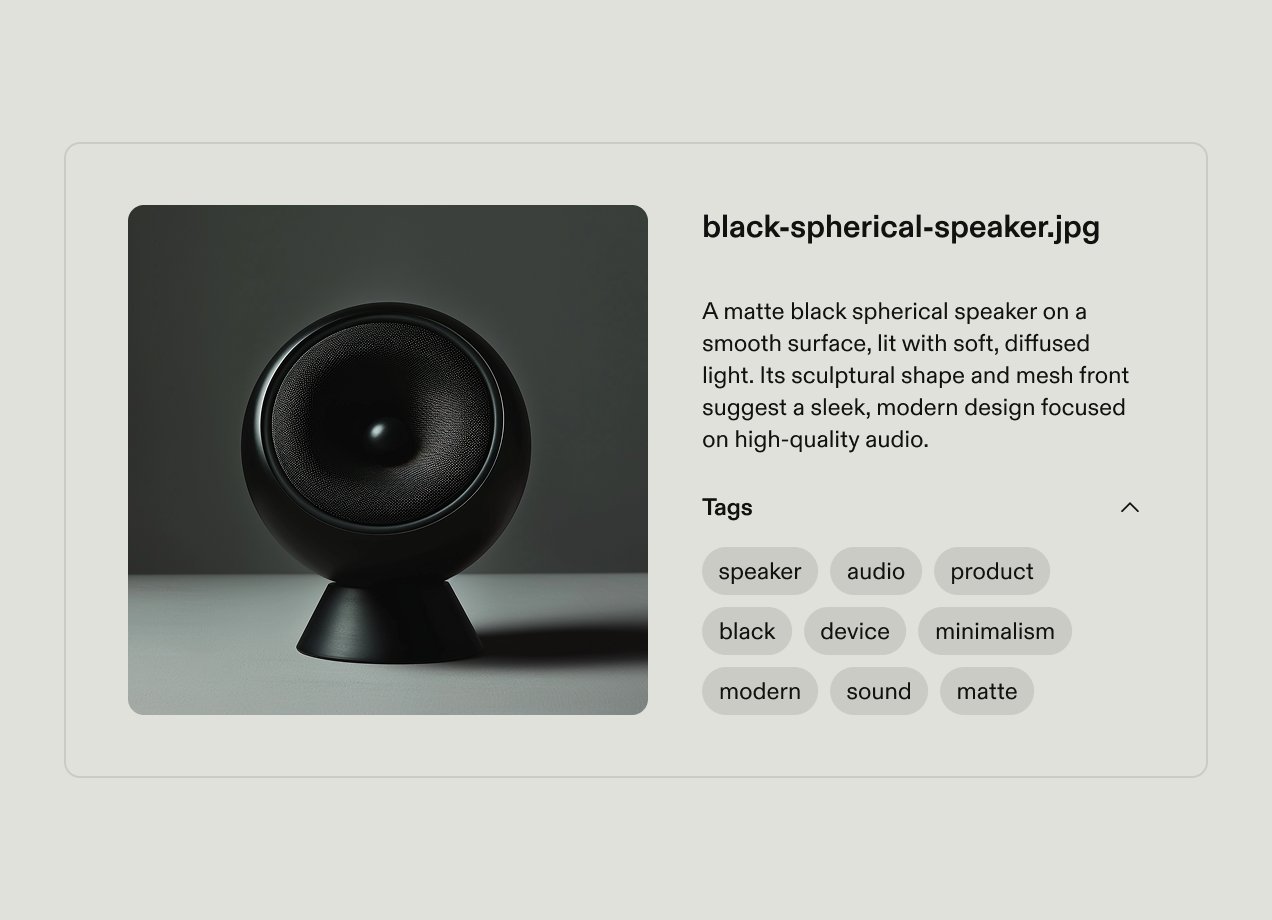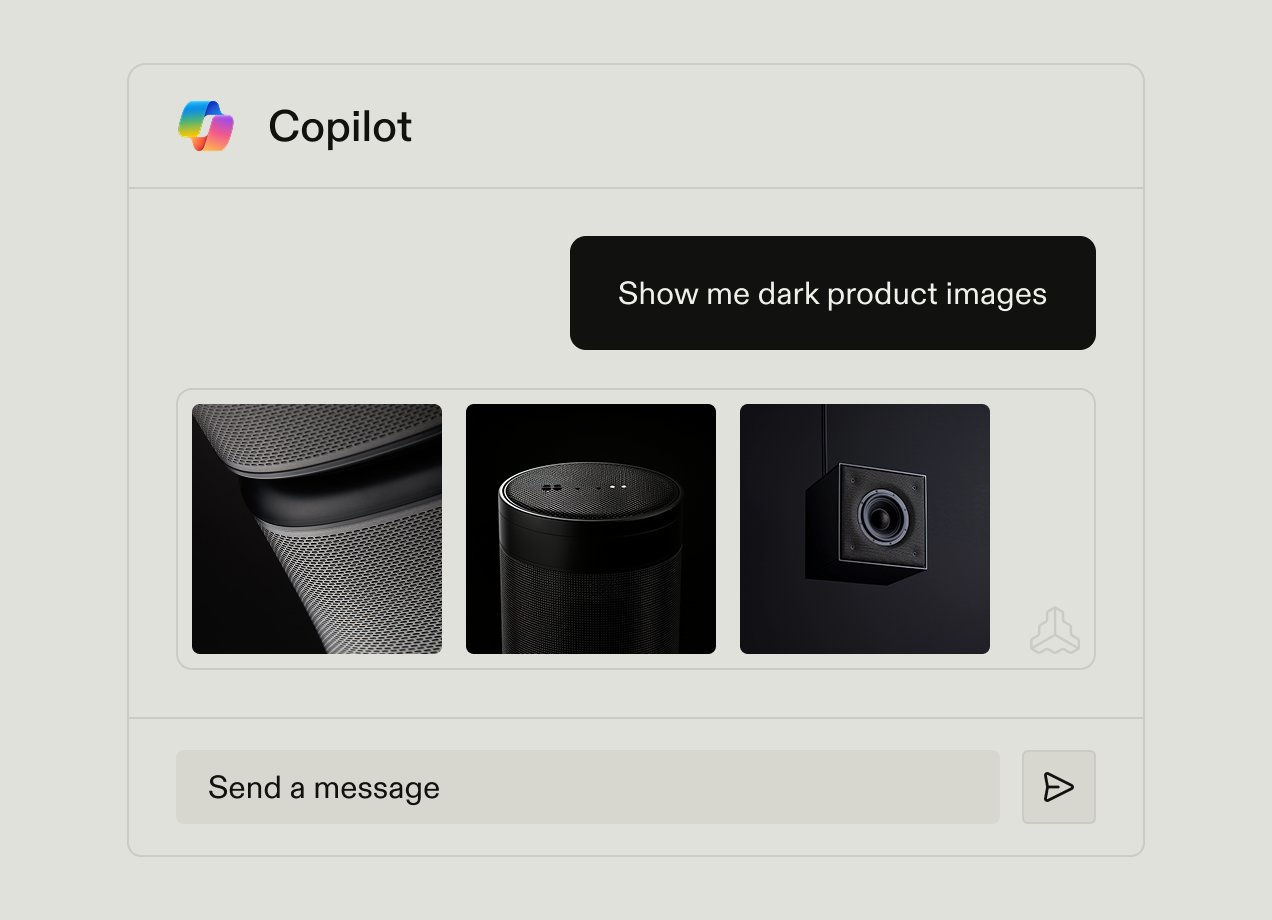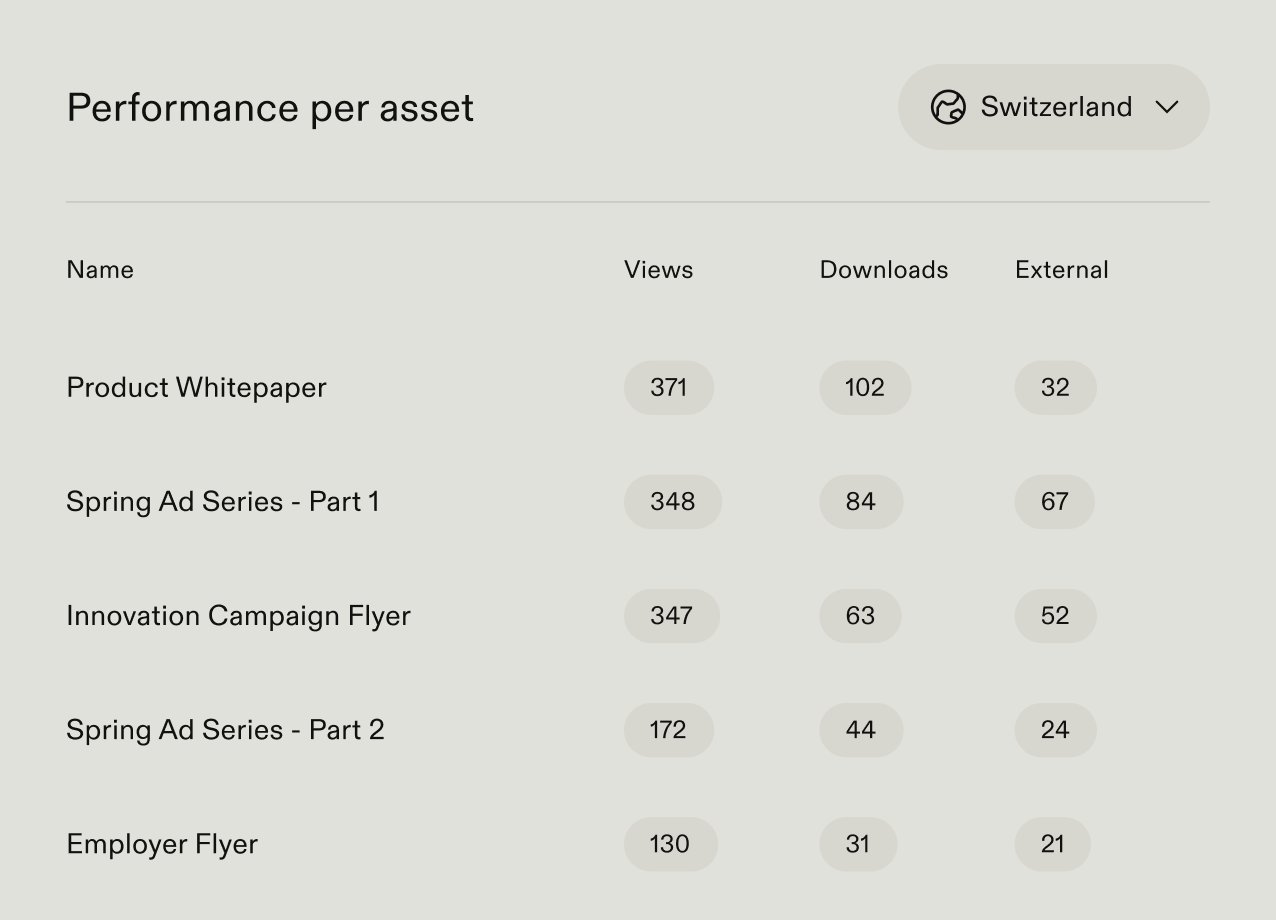If you don’t have a DAM yet, it can be hard to know if one is right for your business. Up to now you’ve managed media files on a shared drive, file server, cloud storage, or company intranet. But as your business grows, your existing tools and processes don’t cut it any longer.
As the number of assets and employees grows, proper asset management becomes essential. Our research found that companies experienced a 458% increase in their number of brand assets over three years, with more and more people creating and using brand files. Without the right tools, asset libraries quickly become difficult to maintain, organize, and use.
A digital asset management system solves those challenges. Here are the main benefits a DAM can offer your business if you get your whole team engaged and committed to using it as part of your tech stack.

1. Provide a centralized home for digital and brand assets
Without a DAM, companies use shared drives on Google or Dropbox to store files, organize assets on the company intranet, or send important brand content by email.
You often find that different departments or regional offices have their own way of organizing their brand assets. which creates silos within the business. These silos put a lot of strain on marketing and brand departments, which spend too much time fielding requests for specific assets or design work for other teams.
For example, telecoms giant Telefónica manages 16 regional brands. Before adopting a DAM platform, many of Telefónica’s larger markets were using their own local platforms. Frontify’s DAM has enabled Telefónica to manage all its brand files and workflows in one centralized space for all its countries and markets.
DAM software brings all your brand materials into a single, shared online home for all team members to access. Your DAM can become the single source of truth for everything brand-related — one tool for the entire company to use, no matter the employees’ location.
2. Improve asset usage across the business
When employees can’t access your brand files, they’re less likely to use them. Without a DAM, your marketing team might forever get requests for specific files, meaning they spend a ton of time adjusting file access settings or sharing materials via email.
A user-friendly DAM makes it easy for employees to use your assets for campaigns and presentations. You can grant access to the whole system or provide limited permissions to specific libraries or assets. Once people have an easy way to use your brand materials, you’ll soon see an uptick in asset usage across the business.
For example, Uber has experienced a 136% increase in asset usage since starting to use Frontify in 2021, and more than 20,000 Uber brand builders have used their brand platform and DAM globally.
3. Reduce time lost searching for assets
Finding the right brand file shouldn’t take up half your day. But many teams still waste hours digging through folders, shared drives, or old email threads to locate a single file.
Modern DAM systems centralize every approved asset in one organized, searchable library, rather than searching manually across multiple storage locations. You can categorize your brand materials into libraries to make it easy to navigate. For example, you could create libraries for marketing campaigns, product lines, departments, or file formats such as videos or PDFs. You can also add metadata and tags to make it easier to search your DAM:
- Metadata is structured data with a clear format, like “date” or “name.”
- Tags are short, open-ended descriptions — like “blue sky” or “product photography” — that you can add to simplify finding an asset.
Many DAM systems also use AI to improve search functionality — features like OCR and visual similarity searches help users find the assets they need more quickly than sifting through traditional, keyword-based search results.
For example, the brand team at Caribou Coffee estimates that Frontify’s DAM has saved them 5 hours of search time per week across different teams and departments, thanks to its centralized, easy-to-use system.

4. Improve brand consistency at scale
Inconsistent branding makes your company look unprofessional. As businesses scale, it becomes increasingly difficult to deliver a consistent brand experience across multiple tools, platforms, departments and locations.
A DAM platform helps create internal alignment on brand-related content by giving everyone centralized access to approved, on-brand materials. You don’t have to worry about people sharing outdated or work-in-progress files because you can simply update or replace files. For example, if you rebrand and adopt a new company logo, you can replace the files in your DAM, so employees use the new and approved logo only.
Any changes you make sync automatically for all users, so updates are instantly visible to everyone with DAM access. These processes help improve creative, visual, and messaging consistency across all departments, regions, projects, and channels.
Consistency helps to build trust with your customers, as they get a cohesive, recognizable brand experience across all touchpoints and interactions with your company. Over time this helps boost your brand’s reputation in the market by demonstrating you’re a professional, consistent, and trustworthy brand.
5. Eliminate time lost duplicating work
If someone can’t find the files they need, they might simply re-create the file from scratch. Recreating assets that already exist drains time, budget, and creative energy. Without a clear view of what’s been produced, teams often duplicate work, such as designing campaign visuals that already live somewhere else in your system.
A DAM platform eliminates this issue by giving everyone access to a centralized, searchable repository of approved assets. That visibility helps teams repurpose materials across regions, campaigns, and channels, ensuring brand consistency while saving on production costs.
When people can find your brand assets, it’s more likely the files will be used to their full potential. This helps you maximize the value of each asset. Companies also reduce unnecessary vendor and agency spend, because they have a clearer idea of what assets they have — and what they need. So, not only does a DAM make life easier for brand builders, it also ensures the company gets the most out of its investments in content creation.
6. Streamline collaboration and approval workflows
A DAM system automates approval workflows and centralizes feedback in one place. Reviewers can comment directly on assets, tag stakeholders, and approve files with just a few clicks. This provides creative teams with a faster, clearer approval process that keeps projects moving. For example, Datacom found its team saves an estimated 3-5 hours per request when waiting for approvals by using the workflows in Frontify’s DAM.
Many DAM tools also include AI functionality that further streamlines workflows by automating repetitive tasks. It automatically routes assets to the right stakeholders based on content type, project, or campaign rules, speeding up the review or approvals process.
Integrations with key tools offer even more productivity benefits. When your DAM connects to design tools like Figma or Adobe Creative Cloud, project management platforms, and marketing systems, teams can collaborate in real time without jumping between tools.

7. Enable marketing teams to be more agile and creative
Without a DAM, marketers can spend hours every week sharing files, changing user permissions, and reviewing other teams’ work to ensure they’re following your brand guidelines. DAM software takes away a lot of that low-level but time-consuming administrative work, letting marketers prioritize the more valuable, strategic work that’s actually in their job descriptions.
A DAM can simplify and automate many of these daily admin tasks — like finding the latest product images or updating a logo — so that marketers can bring campaigns to life without extensive supervision from their brand team or designers. This frees up time for creatives to focus on higher impact, strategic work. As a result, brands are more agile and adapt to market changes or new consumer trends.
8. Improve operational efficiency
DAM software delivers efficiency and productivity boosts across the business, in lots of different ways.
Creative teams save time switching between tools, thanks to DAM software’s integrations with many of the existing tools and technology in your business ecosystem. For example, Frontify connects with tools your teams use every day, like Figma, Adobe, or Canva. These enable designers to seamlessly search your DAM for relevant on-brand assets without switching between tools. You can also connect your CMS or content creation applications to your brand portal so teams can find files quickly and easily.
AI functionality in DAM platforms offers further efficiency gains by speeding up the process of adding files to your DAM. It can automatically tag, sort, and group assets based on content and project context.
Modern DAM systems also let companies consolidate multiple tools into one comprehensive platform. The Frontify DAM integrates directly with our brand guidelines and digital and print templates, allowing companies to create a comprehensive portal to manage everything related to their brand.
9. Give visibility into brand asset use
How often do employees in each department need to use your brand assets, such as logo files, product photos, or boilerplate copy? If all your files are stored on a shared drive, it’s impossible to tell.
But many DAM solutions include analytics functionality that show you data on how and how often each team uses the different assets. This information gives brand managers a better understanding of asset use across the organization and shows how engaged each department is with your brand.
Knowing how your organization uses assets can help teams evaluate and adjust to:
- Improve asset organization and metadata to make it easier to find the correct files
- Determine bottlenecks or blockers that prevent teams from using assets effectively
- Identify your organization’s most valuable assets
- Spot teams with lower-than-average asset usage to find out if they could benefit from additional DAM support or training

10. Improve security
Many DAM vendors adhere to enterprise-grade security standards. DAM solutions typically have robust security measures, including file encryption, copyright and usage restrictions, and geographic targeting to protect assets.
If your DAM tool has AI functionality, it’s important to understand how the AI tools will use your data. For example, Frontify’s OpenAI for Enterprise integration doesn’t use customer data to train public models — but different DAM providers handle AI integrations differently. The best DAM solutions will protect your data and ensure full ownership of your intellectual property, providing you with an encrypted, secure AI-supported infrastructure.
11. Strengthen global brand governance and compliance
Poor brand governance can cause significant challenges for businesses, including inconsistent branding, inefficient workflows, unregulated content production, and legal and compliant issues.
A DAM supports your brand and asset governance efforts. DAM platforms make it easy to control who accesses your assets. You can set up role-based controls so that only certain people can add, change, or remove files from your DAM.
DAM solutions offer secure sharing options: you can easily share individual files or whole libraries with people outside your organization, such as agency partners, freelancers, or even the general public. These options let you keep control as it’s easy to revoke or reduce access as needed. When adding new users, you can choose whether you want to grant them access to the entire system or only certain libraries — for example, so your EMEA team doesn’t access brand assets for your North America region.
DAM platforms also improve brand compliance across the organization, by ensuring team members can only access approved brand materials. This reduces the use of outdated or off-brand content and improves adherence to brand guidelines.
12. Improve legal compliance and risk management
DAM platforms can help companies improve legal compliance when using brand assets, stock images, and other digital files. Modern DAMs have robust search functionality, with filters that automatically highlight assets that comply with usage rights and permissions, so users are less likely to find files they shouldn’t use, reducing legal and compliance risks.
Additionally, AI-powered DAMs may offer automated rights management, notifying brand managers and unpublishing assets when copyright or other usage rights expire, preventing costly legal issues.
DAM platforms also provide detailed changelogs and version controls, maintaining clear audit trails. For AI-powered tools, the AI decisions should be explainable and traceable. The platform provides logs that show who changed what, and when (both for human and AI changes).
13. Streamline collaboration with external partners
While a DAM can have a huge impact on how your internal team members access and use brand materials, it’s not just company employees who need to work with them; it’s also multiple external parties, like agencies, freelancers, and investors.
Kansas City Chiefs has simplified partner collaboration using the Frontify DAM. Now, partners like Bud Light and Community America can view their brand assets in the Frontify platform, rather than sending files back and forth via email.
DAM software streamlines collaboration with external partners. For example, if you have a dedicated library of brand assets that are approved for PR teams and journalists, you can put the files in a library that external users have access to. This means that your internal teams spend less time on file management and access requests, and you can collaborate with external users more effectively and efficiently.
14. Automate asset optimization and distribution
Publishing teams often spend hours resizing, reformatting, and uploading assets for every channel. A DAM takes care of that manual work. With built-in bulk processing, assets can be resized, cropped, and converted into the right formats for web or print. Teams no longer need to manually create dozens of file versions — everything is optimized once and instantly available to everyone who needs it.
Modern DAM systems also simplify distribution through powerful API connections. Approved brand assets can flow from the DAM to websites and social platforms without extra uploads or downloads. This automated distribution removes bottlenecks, reduces human error, and keeps content delivery in sync across every touchpoint.
15. Deliver measurable ROI and cost savings
While a DAM platform is a significant investment, it often delivers cost savings on other budget line items, such as reducing agency spend and eliminating redundant tools.
For example, Frontify’s platform combines DAM, brand guidelines, templates, and brand portals. If your company uses multiple tools for different aspects of brand management, consolidating into a comprehensive platform saves on duplicate tools.
You’ll also likely experience cost savings from improved productivity and efficiency, reduced branding errors and duplicate work, and avoiding legal costs by reducing compliance risks. These all combine to deliver measurable return on investment and tangible cost savings compared to managing brand assets in fragmented shared drives.
Additional DAM benefits by industry and use case
Companies will experience different benefits from a DAM system depending on their size, industry, and the particular asset management challenges they’re facing. The same DAM features and capabilities will deliver different business value depending on the company environment and situation.
Enterprise marketing teams
For large marketing organizations, a DAM provides the structure and speed needed to manage complex global operations efficiently at scale.
- Multi-brand coordination: Enterprise marketers juggle multiple brands, sub-brands, and regions — each with its own creative teams and local priorities. A DAM ensures centralized brand governance while allowing local flexibility, so teams can adapt campaigns to local audiences without diluting brand identity.
- Global campaign acceleration: Instead of recreating assets for each region, teams can quickly find, adapt, and reuse approved materials from the DAM. This reduces production cycles from weeks to days, helping brands launch global campaigns faster and respond quickly to market opportunities.
- Return on investment: DAM adoption often translates into millions saved in unnecessary production and agency spend — while empowering teams to do more with the assets they already have. Enterprise teams track DAM success through asset reuse rates, adoption metrics, reduced duplicate work, and reduced external agency costs.
Creative agencies and studios
For agencies managing multiple clients and projects, a DAM streamlines creative production while enhancing collaboration and quality of work.
- Improved client collaboration: DAM portals give agencies a secure, centralized space to share creative assets, manage approvals, and control access. Clients always see the latest version rather than digging through email threads or conflicting file updates.
- Workflow automation: Agencies can automate repetitive production tasks like file conversions, resizing, and approval routing. This lets studios take on more clients and deliver faster without sacrificing quality.
- Competitive differentiation: A DAM enables agencies to deliver projects with greater speed, consistency, and professionalism. Branded portals, polished handovers, and shorter turnaround times signal help agencies stand out against competitors in client pitches and during projects.
Regulated industries
For organizations in highly regulated industries, such as healthcare, finance, or legal sectors, a DAM ensures every asset meets strict compliance and security standards while maintaining operational efficiency.
- Compliance automation: DAM platforms automatically enforce usage rights, expiration dates, and licensing terms, preventing teams from using outdated or noncompliant assets. This built-in governance eliminates the risk of expired licenses or off-label content slipping into campaigns.
- Audit readiness: Every asset version and activity is logged in a complete, time-stamped audit trail. Teams can instantly demonstrate compliance history, ownership, and usage rights to regulators, reducing legal exposure and accelerating the audit process.
- Risk mitigation: DAM systems safeguard sensitive brand materials with role-based permissions, ensuring only authorized users can view or modify specific assets. This minimizes the risk of data misuse or unauthorized content publication, protecting the business from costly compliance breaches or fines.
FAQs


